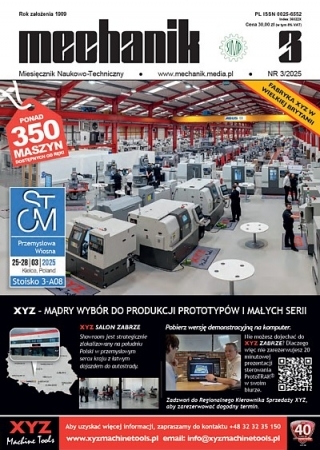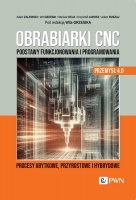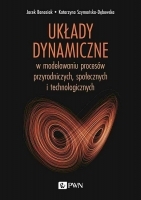Submicro and nano ceramic as ballistic protective material
Ceramika submikronowa i nanoceramika jako materiał na osłony balistyczne
Mechanik nr 02/2015 - Artykuły z Międzynarodowej Konferencji Innovative Manufacturing Technology IMT 2014 zamieszczone na płycie CD
ABSTRACT: The increasing capability of modern anti-armor threats has intensified the need for highly effective passive armor systems. Additionally, light-weight armor systems becoming more important to ensure improved strategic mobility and tactical agility for future combat systems, while maintaining crew protection. It is necessary to airlift military vehicles to remote locations in under-developed regions this requires a large weight reduction in the armor system. Ceramic armor technology offers significant advantages for meeting future protection requirements. Ceramics are effective, because of their hardness, which is considerably greater than that of other material classes, and also they are much lighter than steel. The investigation and application of ceramics against small arms threats has a long history and the ballistic performance of ceramic armors for personnel protection is very high; the principles governing these defeat mechanisms are now generally understood. However, achieving similar ceramic performance versus larger caliber, like kinetic energy (KE) penetrator threats, has long taken as a difficult challenge. This work deals with sub micro and nano ceramics for ballistic protection. Model KE penetrators have been used to investigate the protection capability.
KEYWORDS: ballistics, ballistic protection, Si3N4 ceramics, ceramic armor, KE penetrator.
STRESZCZENIE: Nowoczesna amunicja, o coraz większej zdolności rażenia i sile przebijania osłon balistycznych, powoduje konieczność ulepszania wysoko-efektywnych, pasywnych systemów obronnych. Celem stało się projektowanie coraz wytrzymalszych, a zarazem lżejszych osłon i pancerzy, zapewniających skuteczną ochronę żołnierzom, przy jednoczesnym zwiększeniu mobilności i zdolności taktycznych konstrukcji. Niższa waga pancerza jest szczególnie istotna, jeśli wziąć pod uwagę na jak duże odległości muszą czasem być transportowane pojazdy bojowe. Materiały ceramiczne znajdują zastosowanie w osłonach balistycznych, z powodu wysokiej twardości i małej masy, co powoduje, że pancerz kompozytowy z warstwą ceramiczną, będąc lżejszy i równie wytrzymały na wpływ obciążenia uderzeniowego jak jego tradycyjny odpowiednik o tej samej grubości, spełnia powyższe wymagania dotyczące nowoczesnych pancerzy. Prowadzone od lat badania nad materiałami ceramicznymi w zakresie ich stosowalności jako elementu pancerza lub indywidualnej osłony balistycznej, pozwoliły na zrozumienie zasad zachowania materiałów ceramicznych pod obciążeniem dynamicznym. Jednakże, opis zachowania tych materiałów po uderzeniu amunicji o dużym kalibrze, jak np. pocisk podkalibrowy (ang. kinetic energy (KE) penetrator) stanowi nadal naukowe wyzwanie. W niniejszej pracy zamieszczono rozważania dotyczące materiałów ceramicznych o submikro- i nanostrukturze, mających zastosowanie dla ochrony balistycznej, w szczególności przedstawia się wyniki badań zachowania materiałów ceramicznych pod wpływem uderzenia pociskami podkalibrowymi.
SŁOWA KLUCZOWE: balistyka, osłona balistyczna, pancerz ceramiczny, pocisk podkalibrowy, ceramika Si3N4.
BIBLIOGRAFIA / BIBLIOGRAPHY:
- ZUKAS J. A., High Velocity Impact Dynamics, Wiley, New York, 1990.
- ROSENBERG, Z., DEKEL, E., Terminal Ballistics, Springer, Heidelberg, 2012.
- HALL, E. O., The deformation and ageing of mild steel. 3. Discussion of results. Proceedings of the Royal Society of London, Series B, 64, 1951, 747-753.
- PETCH, N. J., The Cleavage Strengt of Polycrystalls. Journal of the Iron and Steel Institute, 174, 1953, 25-28.
- HONGWEI M., KRELL A., Synthesis and Processing of Nano a-Al2O3 Powder, Key Engineering Materials Vols. 206-213, 2002, pp. 43-46.
- KRELL A., Fracture Origin and Strength in Advanced Pressure Less Sintered Alumina, J. Am. Ceram. Soc., 81 (7), 1998, pp. 1900-1906.
- KRELL A. , BLANK P., The influence of shaping method on the grain size dependence of strength in dense submicrometer alumina, J. of the European Ceramic Society 16, 1996, pp. 1189-1200.
- KRELL A., Improved hardness and hierarchic influences on wear in submicron sintered alumina, Materials Science and Engineering A, 209, 1996, pp. 156-163.
- KRELL A. and BLANK P., Grain Size Dependence of Hardness in Dense Submicrometer Alumina, J. Am. Ceram. Soc., 78 (4), pp. 1118-1120.
- KRELL A., A new look at the influences of load, grain size and grain boundaries on the room temperature hardness of ceramics, Int. Journal Refractory Metals & Hard Materials,16, 1998, pp 331 – 335.
- STRASSBURGER E., SENF H., ROTHENHÄUSLER H., LEXOW B., KRELL A. Influence of Grain Size and Microstructure on the Ballistic Resistance of Alumina, Proc. 18th Int. Symp. On Ballistics, San Antonio, TX, 1999.
- STRASSBURGER E., LEXOW B., KRELL A., Ceramic Armor with Submicron Alumina against AP Projectiles, Ceram. Trans. 134 [1-2], 2001, 83-90.
- ANTIS G. R., J. Am. Ceram. Soc. 64, 1981, pp. 533-538
- KAYSER et al., Nanostructured Materials 8, 1997, 4, pp. 489-497
- DANZER R., HARRER W., SUPANCIC P., LUBE T., WANG Z. AND BÖRGER A., J. of the European Ceramic Society 27 (2007), pp. 1481–1485.
- BÖRGER A., SUPANCIC P. AND DANZER R., J. of the European Ceramic Society 24 (2004), pp. 2917-2928.
- BÖRGER A., SUPANCIC P. AND DANZER R., J. of the European Ceramic Society 22 (2002), pp. 1425–1436.




















